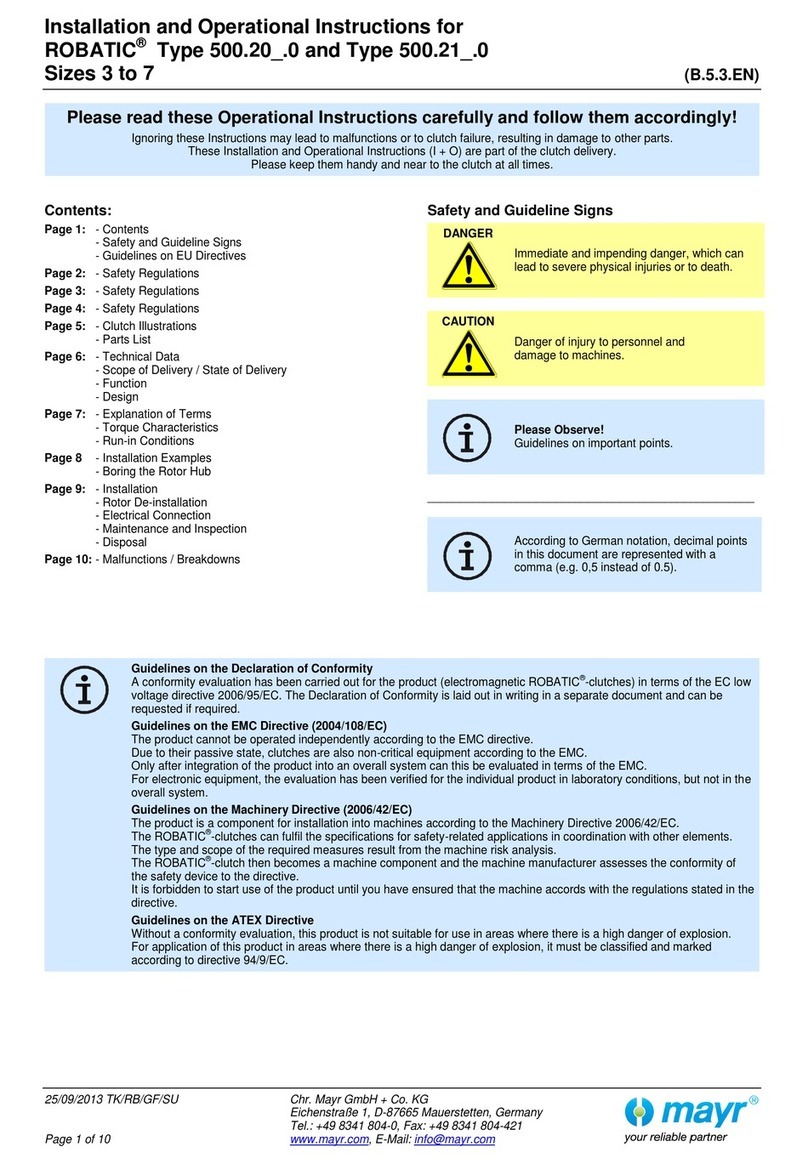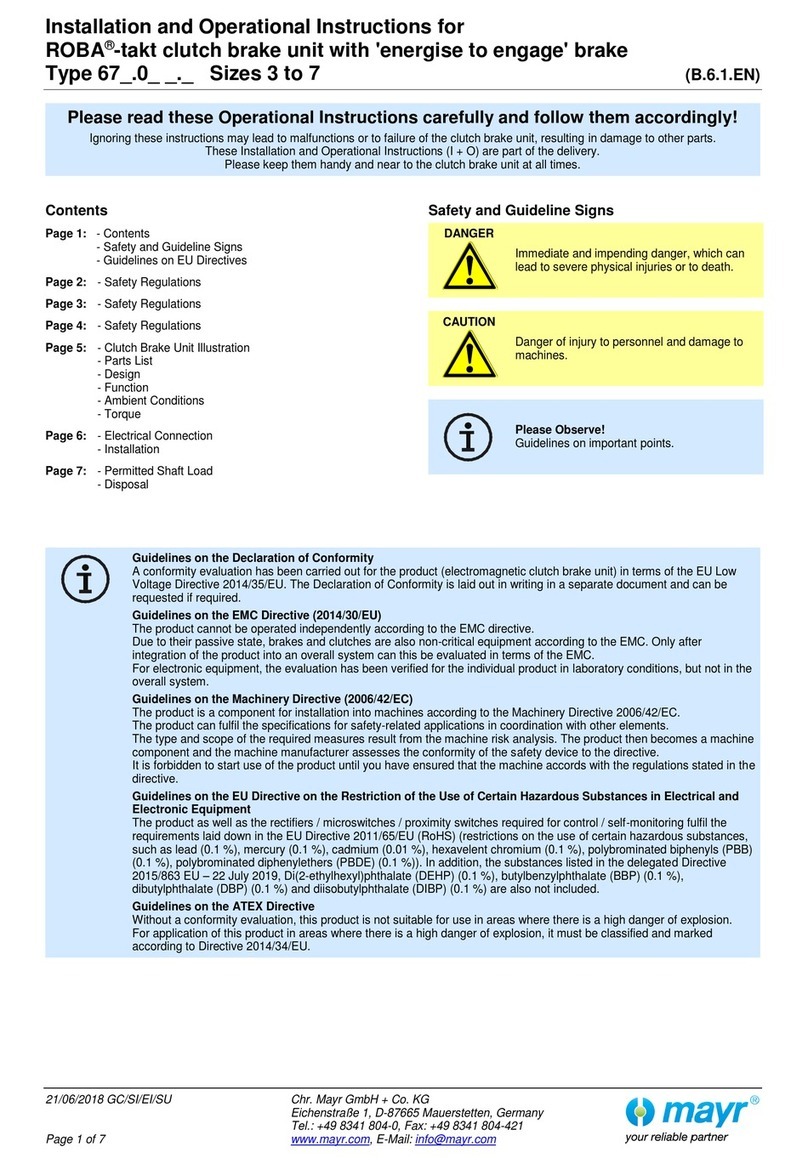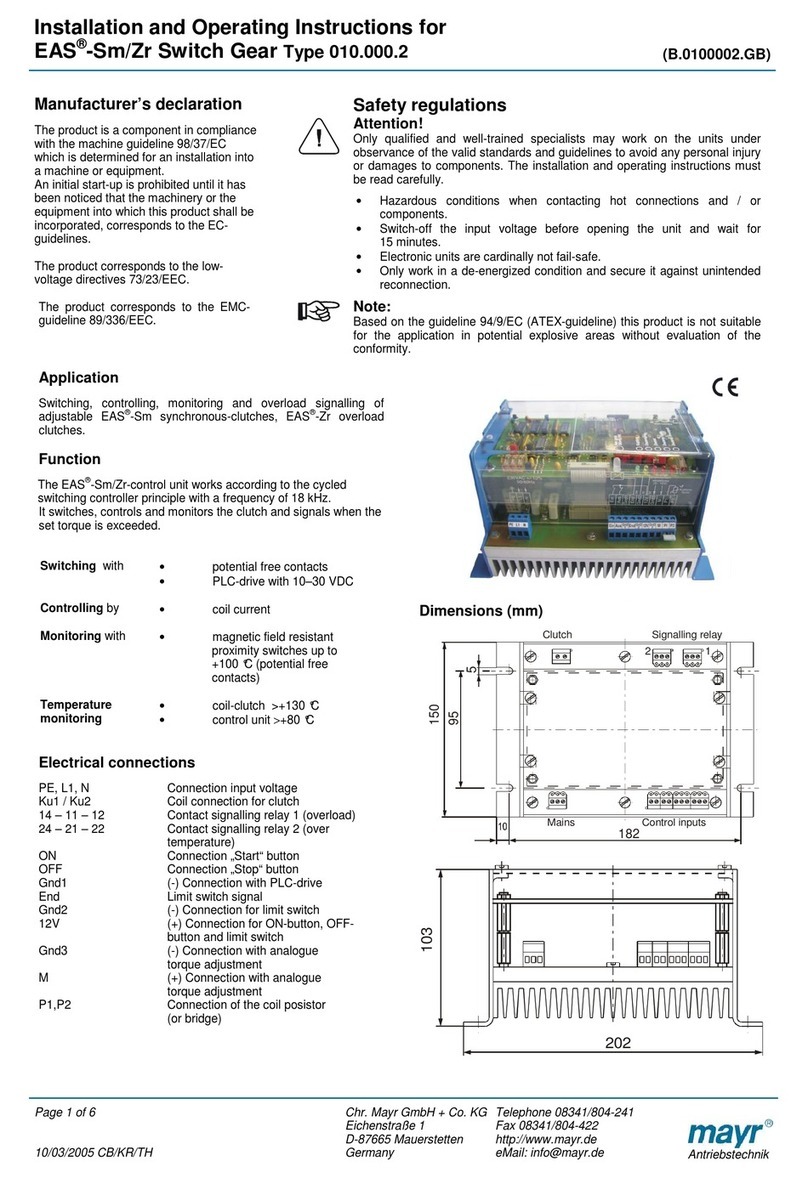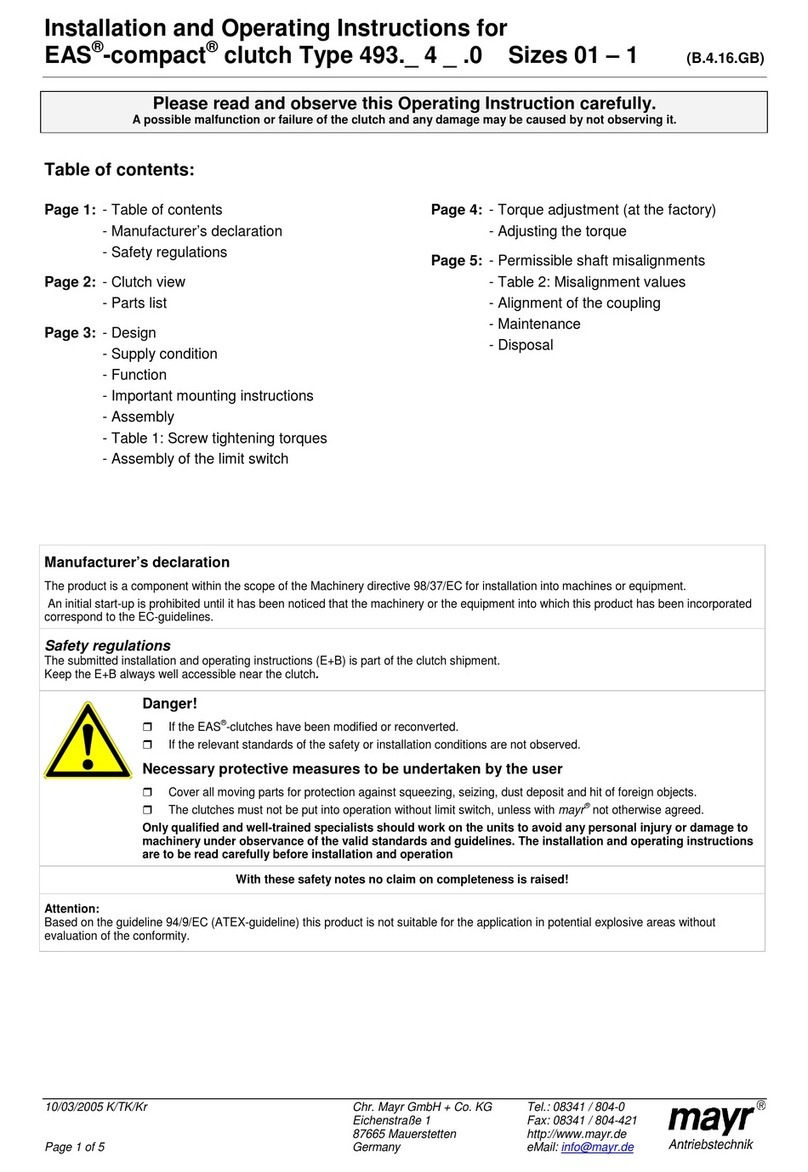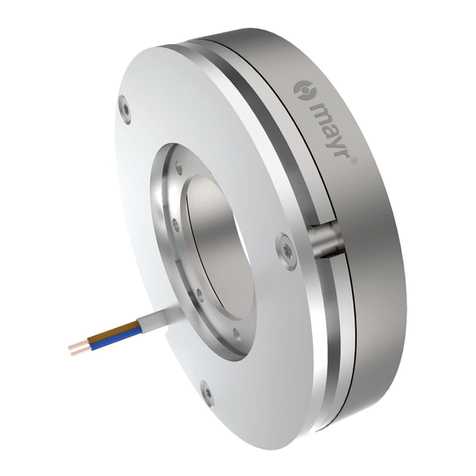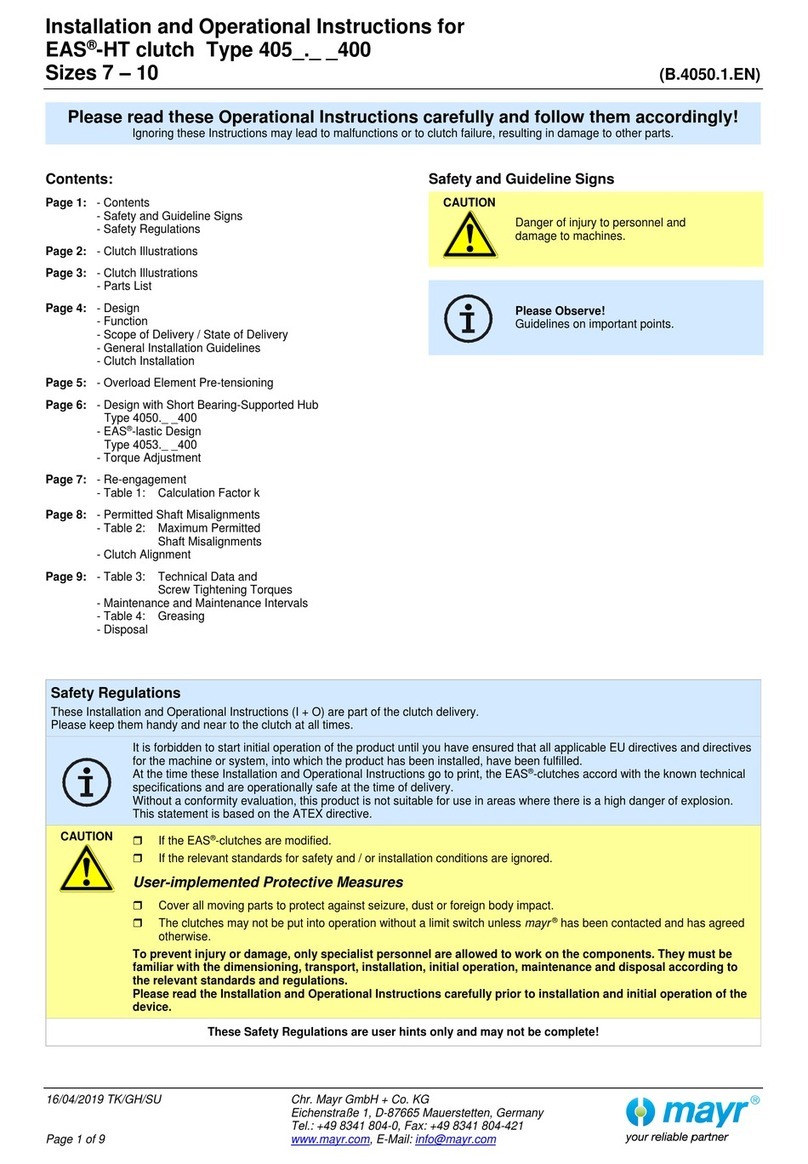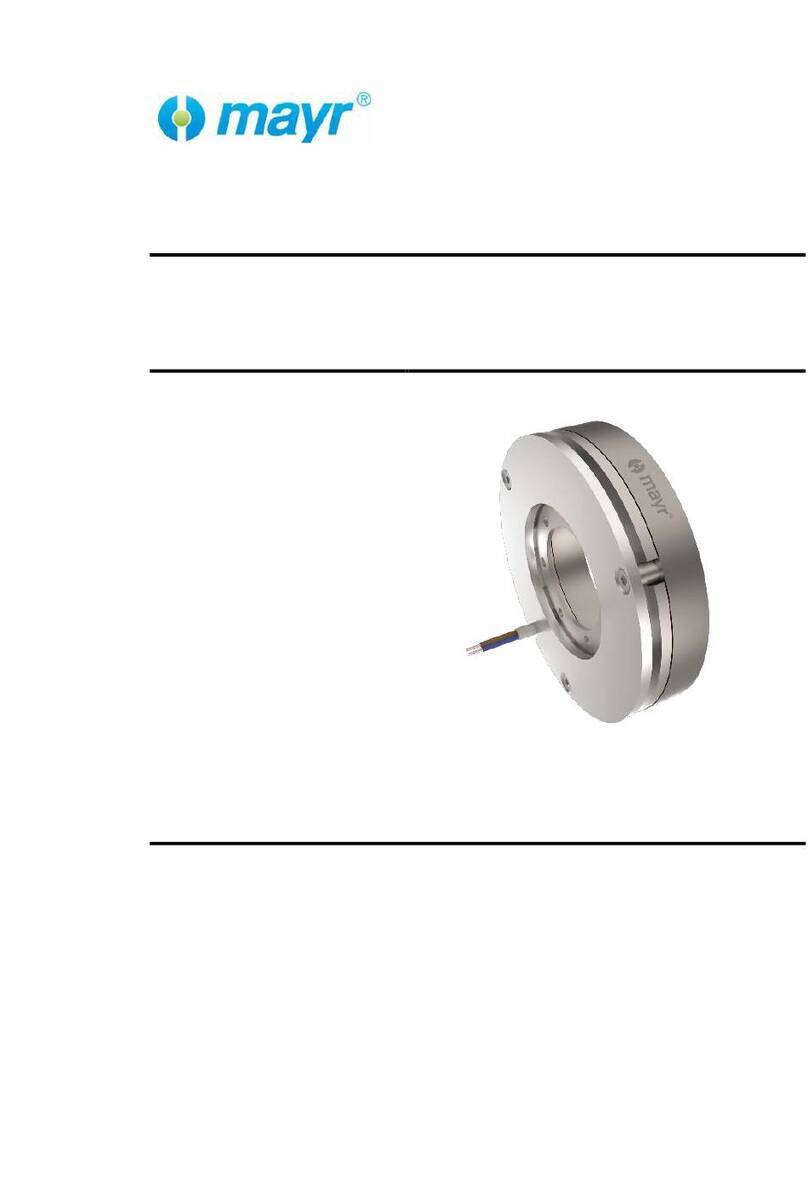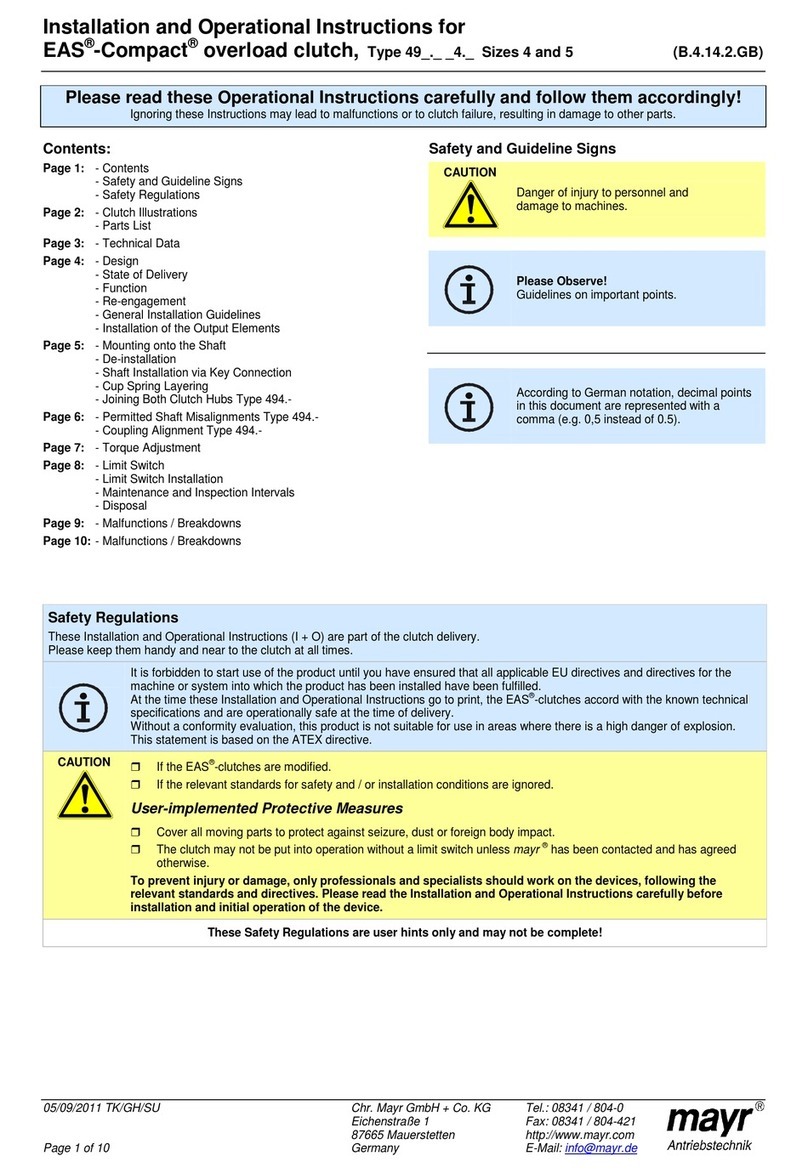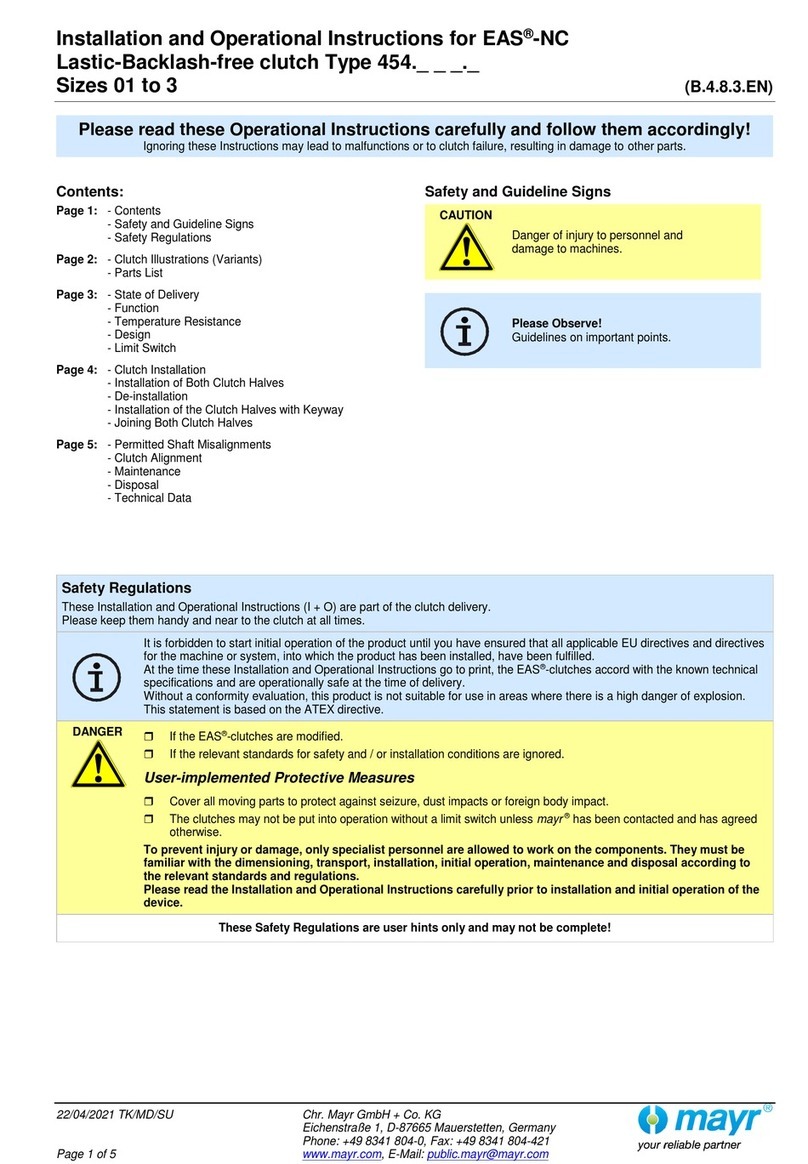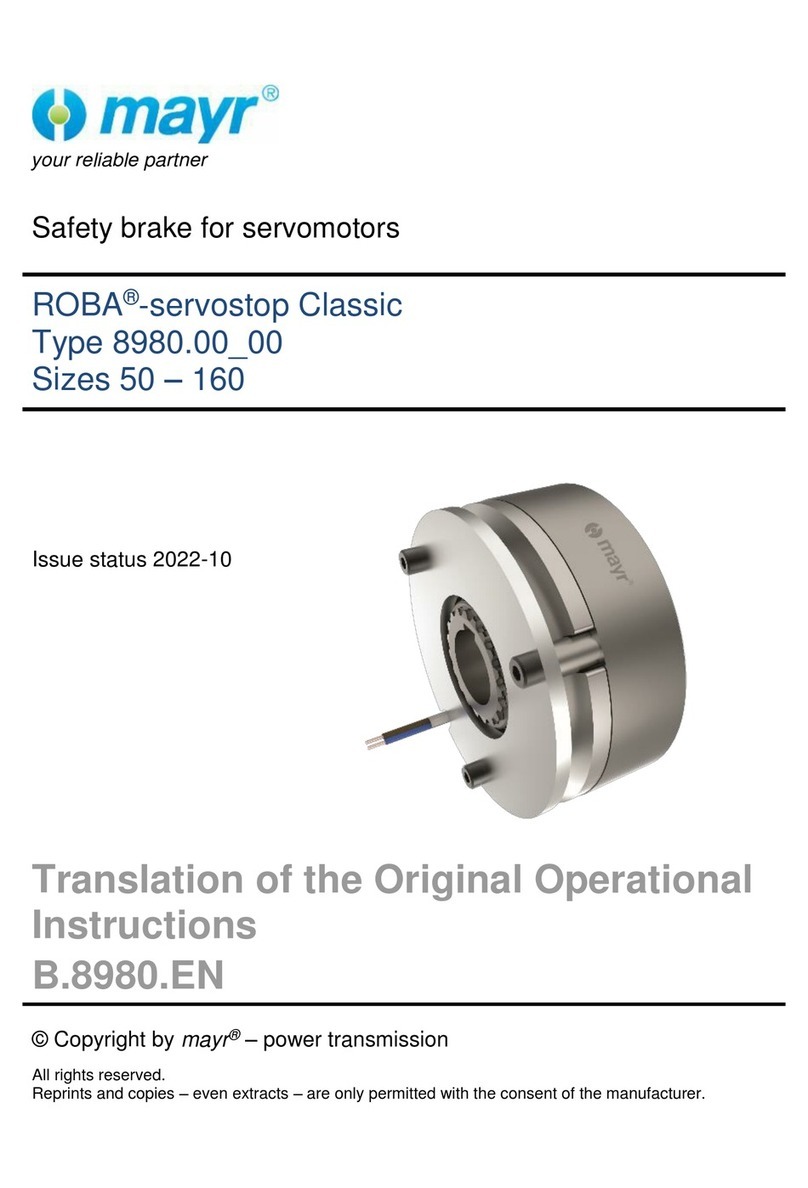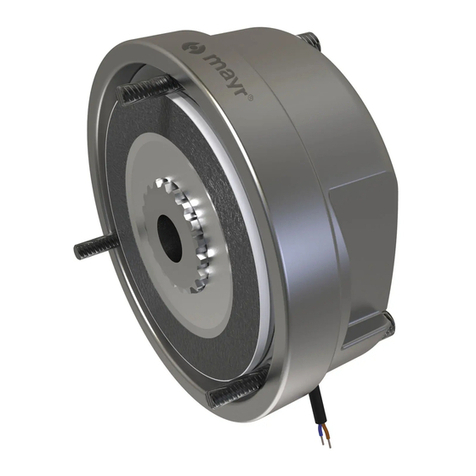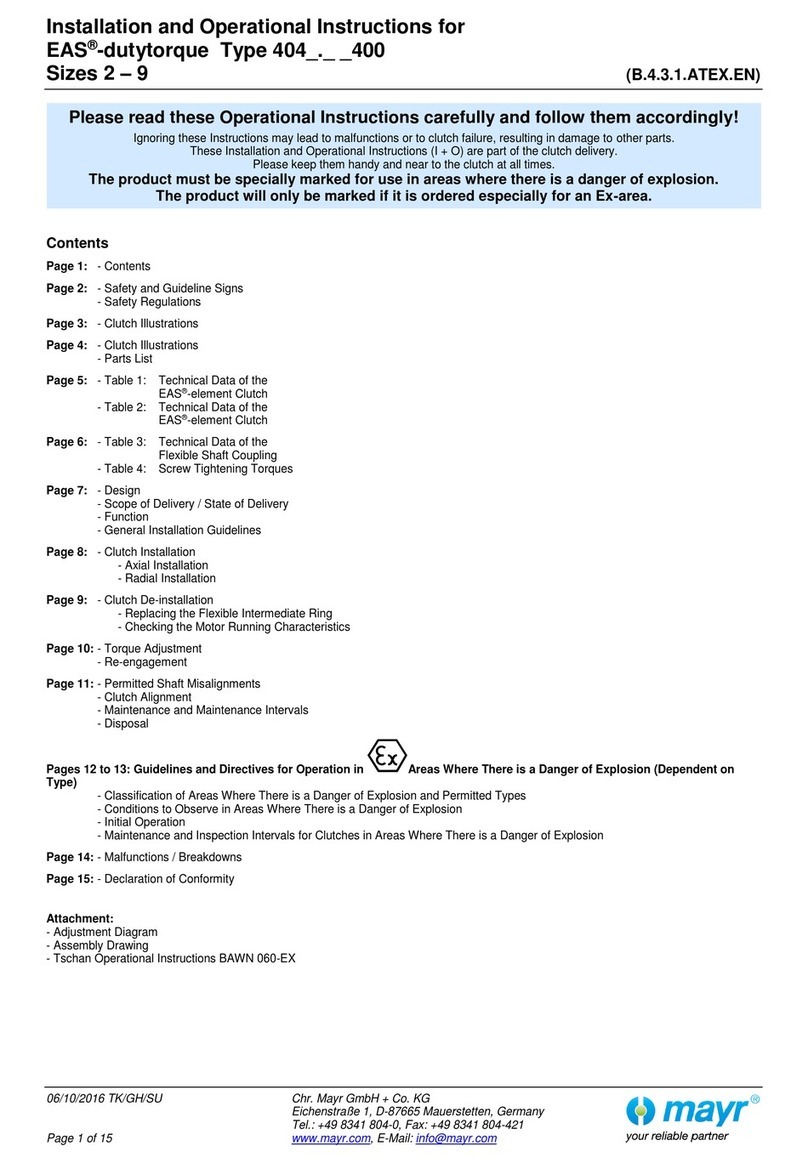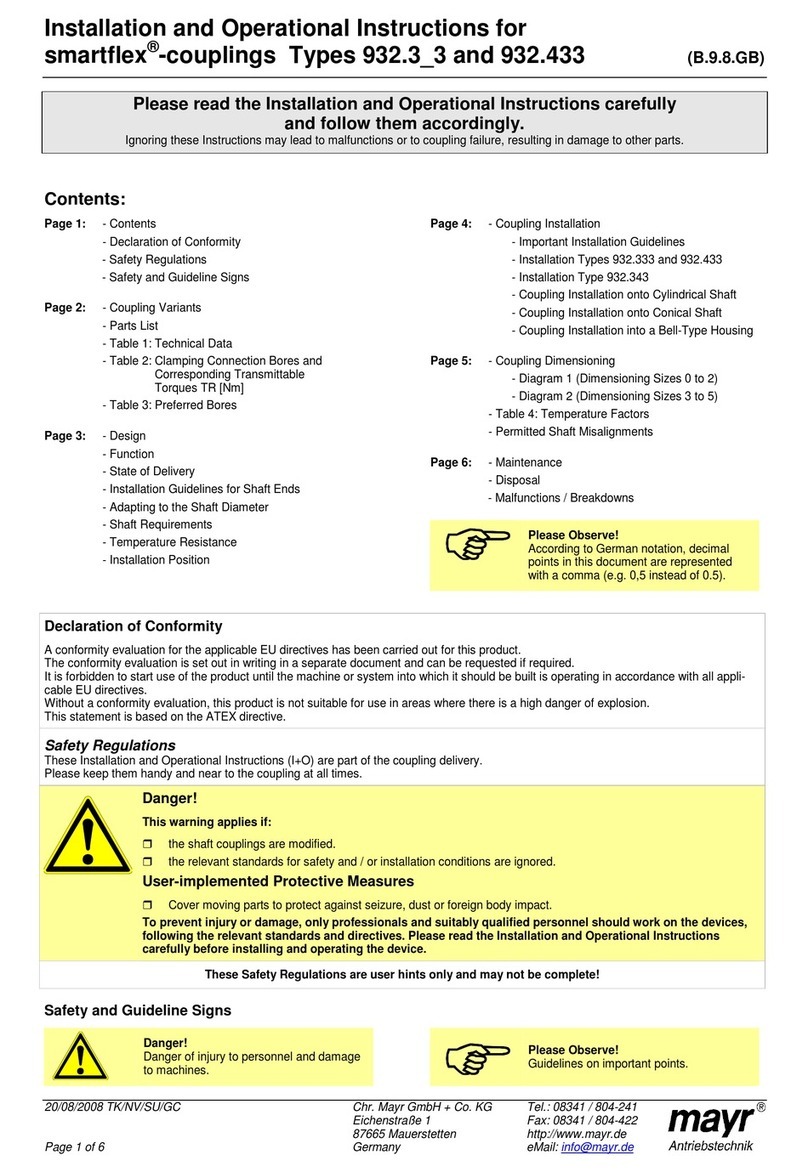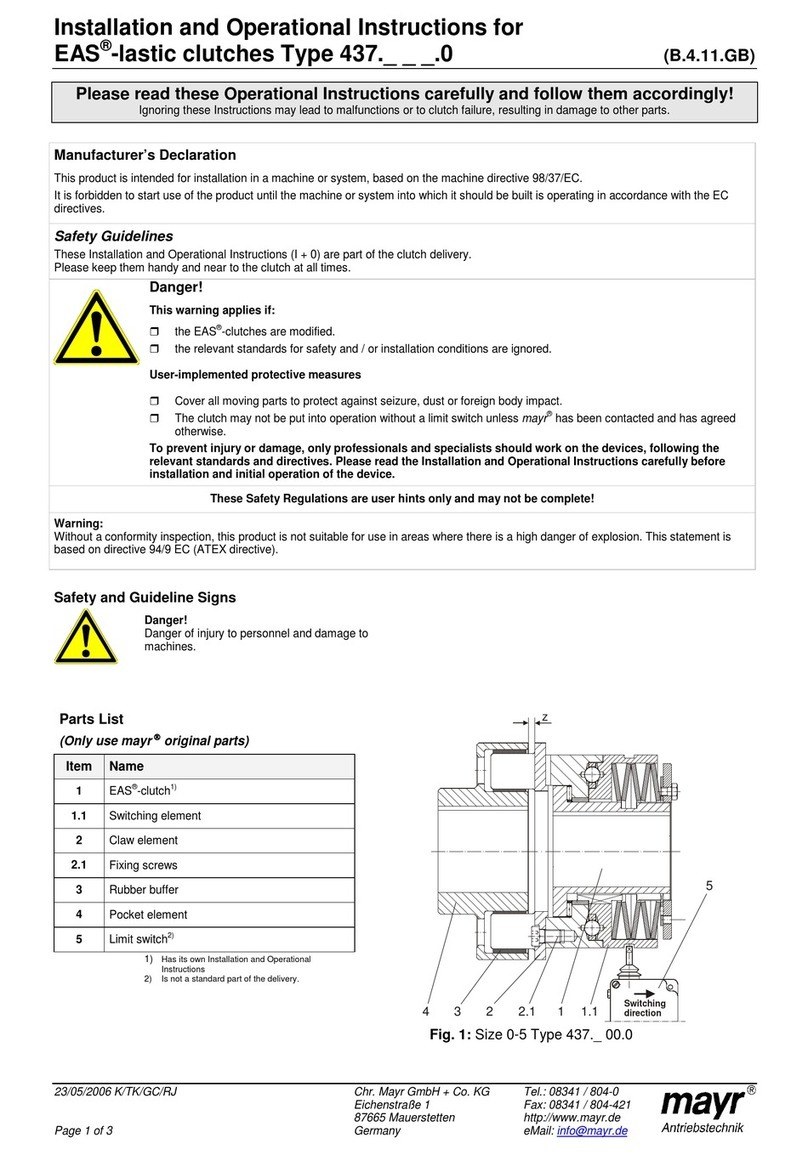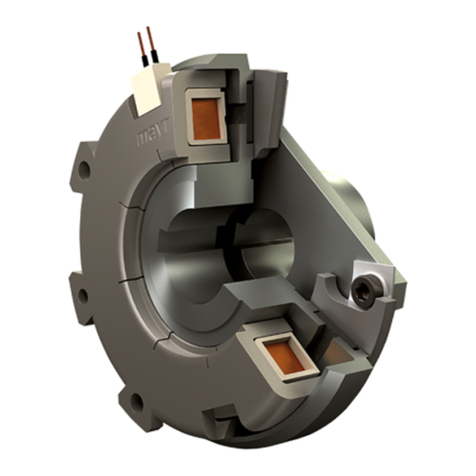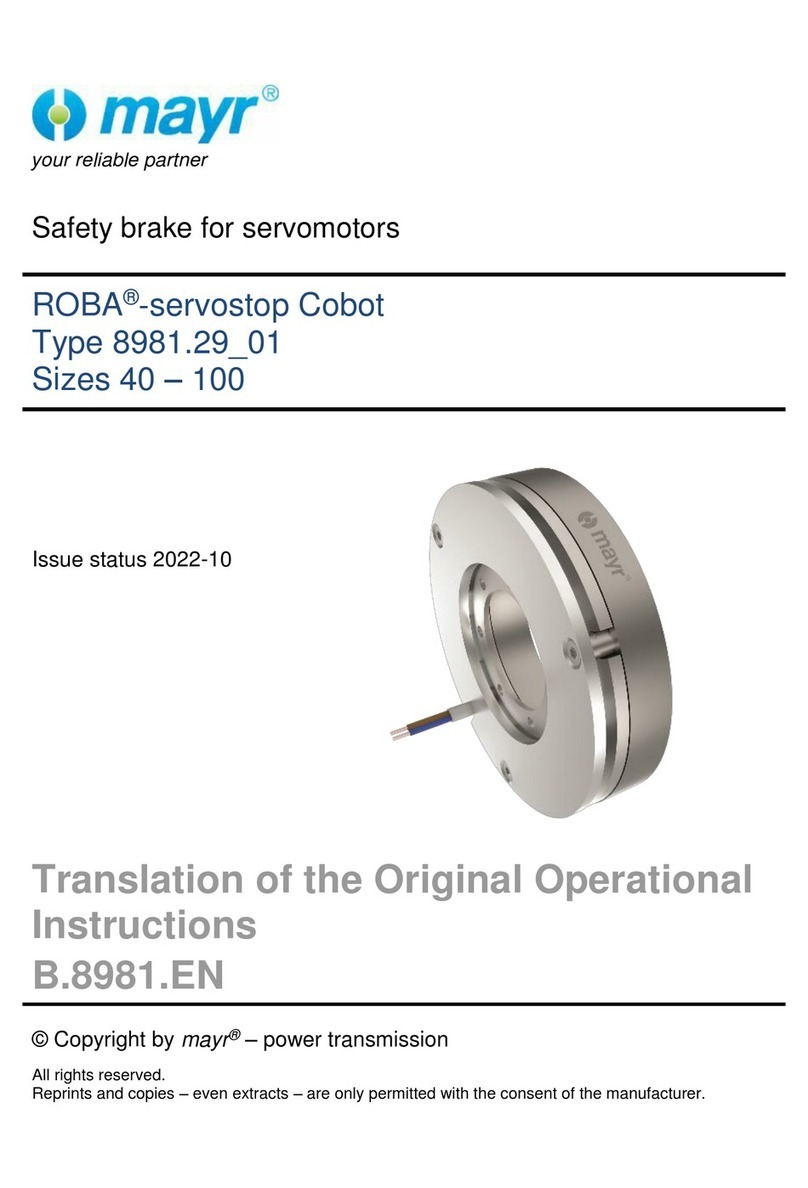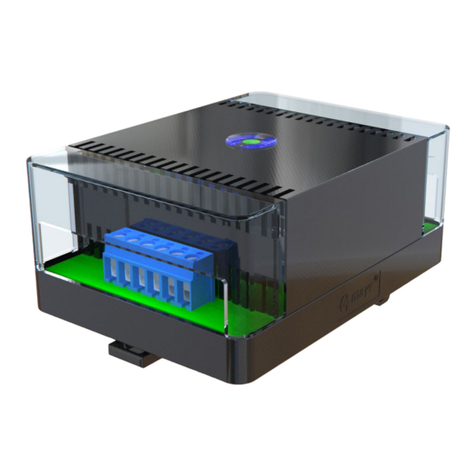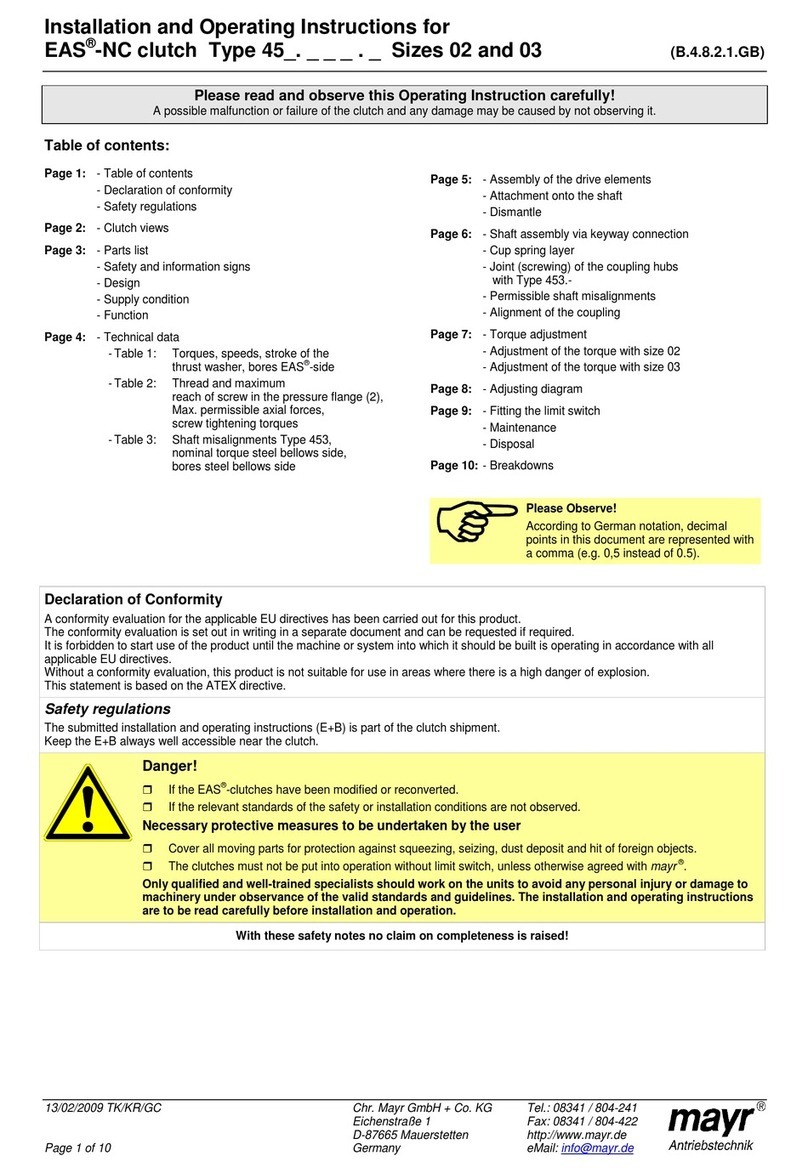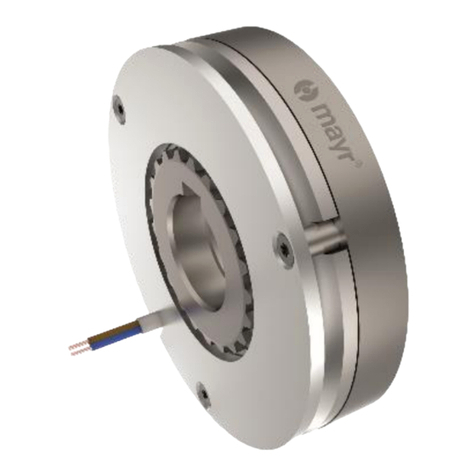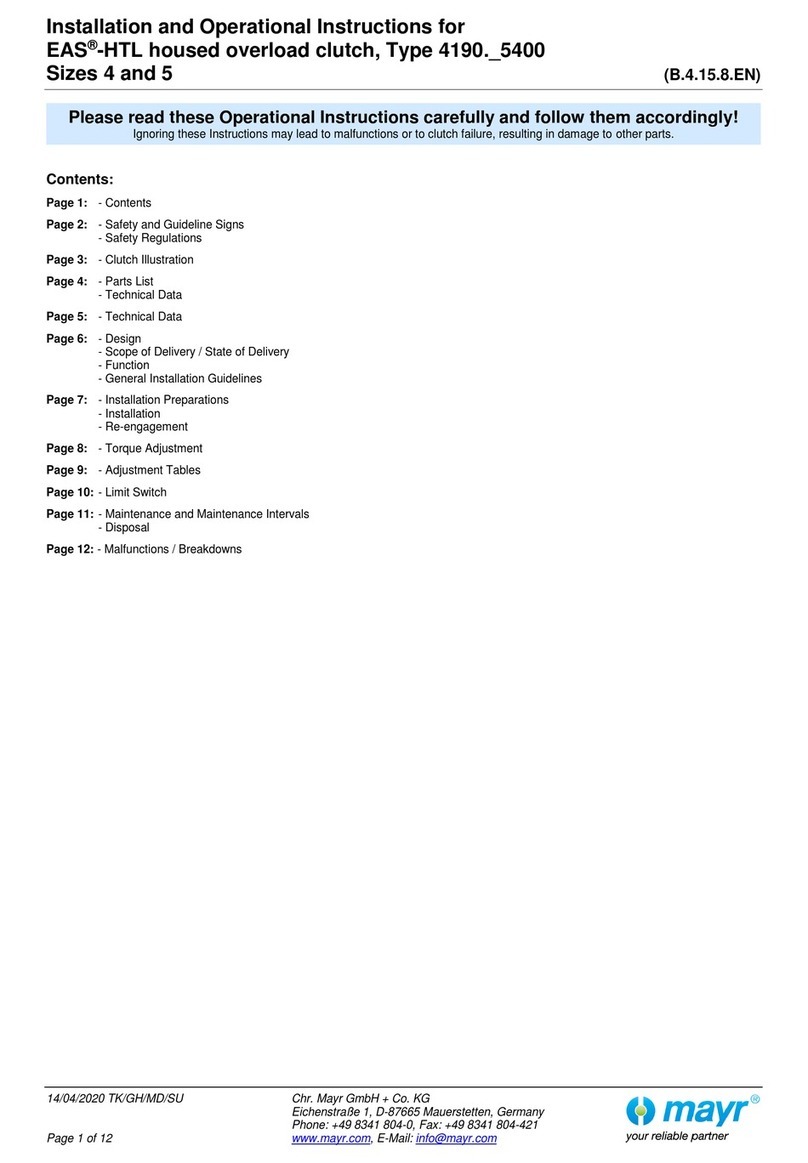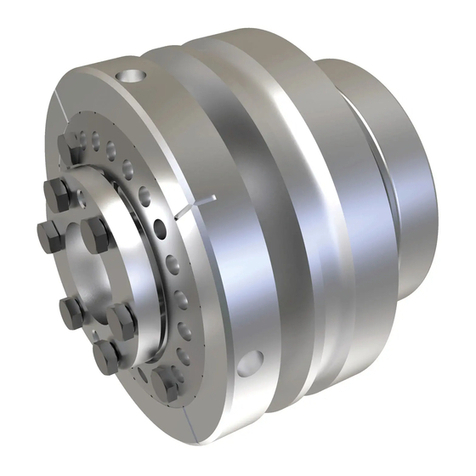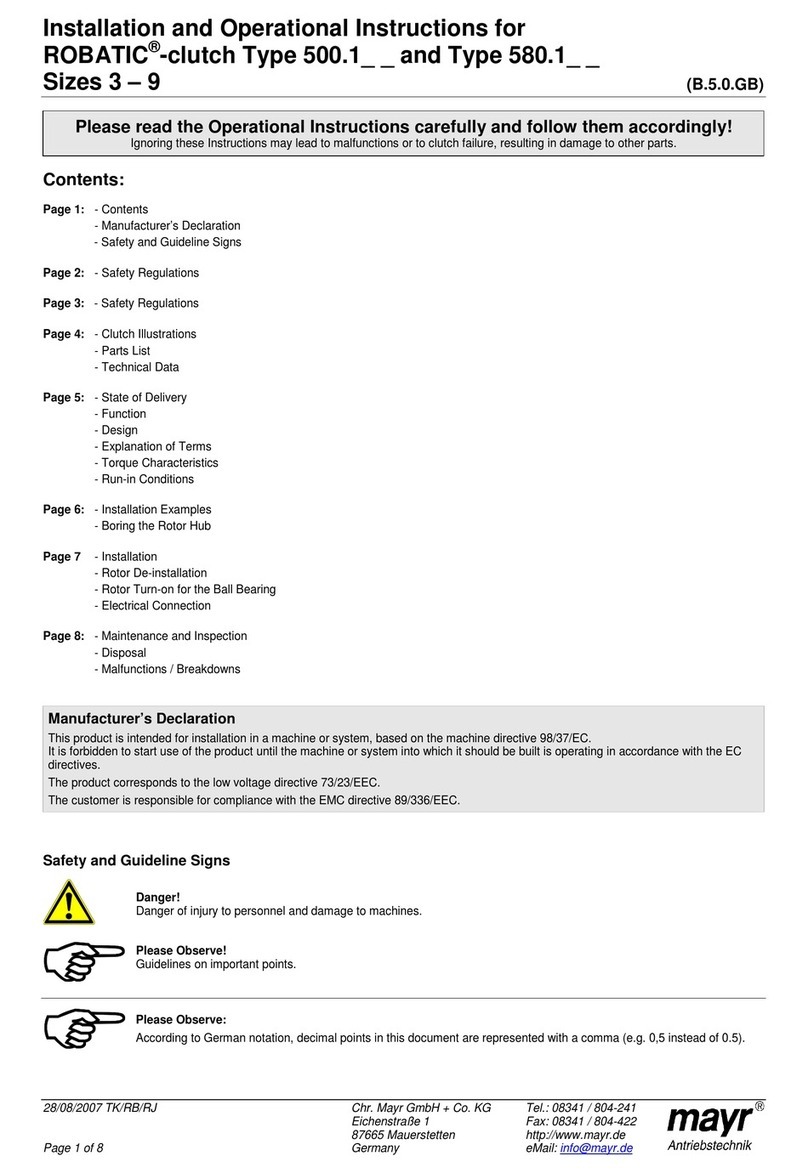
Installation and Operational Instructions for
EAS®-element clutch
Sizes 6 –14 (B.4.3.EN)
11/02/2013 TK/GH/SU Chr. Mayr GmbH + Co. KG
Eichenstraße 1, D-87665 Mauerstetten, Germany
Tel.: +49 8341 804-0, Fax: +49 8341 804-421
Page 4 of 11 www.mayr.com, E-Mail: info@mayr.com
Design
The EAS®-element clutches are designed as mechanically
disengaging overload clutches with overload elements (2)
according to the ball-detent principle.
Function
The EAS®-clutch protects the drive line from excessively high,
unpermitted torque impacts which can occur due to unintentional
blockages.
After overload has taken place, the transmitting mechanism is
completely disconnected. Only the bearing friction continues to
have an effect.
This means that no re-engagement impacts or metallic sliding
movements occur on the clutch torque transmission geometries
when using this clutch variant.
When in operation, the set torque is transmitted from the hub (1)
(input) via the pressure flange (11) or the flange hub (24)
(flexible coupling) onto the output.
If the set limit torque is exceeded (overload), the clutch
disengages.
On disengagement, the bolts (2.2.1) in the overload elements (2)
perform an axial movement (stroke);
a contactless limit switch provided customer-side can be used
here for recognition of overload.
The bolts (2.2.1) remain disengaged. Input and output are
separated residual torque-free.
After-acting masses can run free.
After overload occurrence, the clutch has no
load-holding function.
The run-out time after disengagement must be
max. 10 minutes.
In order to prepare the clutch for renewed operation, the
bolts (2.2.1) must be re-engaged manually (see section Re-
engagement).
Scope of Delivery / State of Delivery
The EAS®-clutch is manufacturer-assembled ready for
installation.
The torque is set manufacturer-side according to the
customer's request (please compare the torque stipulated in
the order with the torque imprinted/engraved in the
identification).
Otherwise, the clutch must be adjusted to the required
torque by using the Adjustment Diagram (attachment) (see
section Torque Adjustment).
Please check the scope of delivery according to the Parts List as
well as the state of delivery immediately after receiving the
goods.
mayr®will take no responsibility for belated complaints.
Please report transport damage immediately to the deliverer.
Please report incomplete delivery and obvious defects
immediately to the manufacturer.
General Installation Guidelines
The bore tolerances in the hub (1) and in the flange hub (24) are
produced to tolerance quality H7. The surface roughness depth
in the bores is produced to Ra 1,6 µm.
Please secure screws with Loctite 243 (medium hard).
Please observe the screw tightening torques
acc. Table 1!
Before initial operation of the clutch, please
remove the eyebolt (28) (installation aid).
Mounting onto the Shaft
Mount the EAS®-element clutch using a suitable mounting device
onto the drive shaft and secure it axially (e.g. using a washer
and a screw, screwed into the shaft threaded centre hole).
